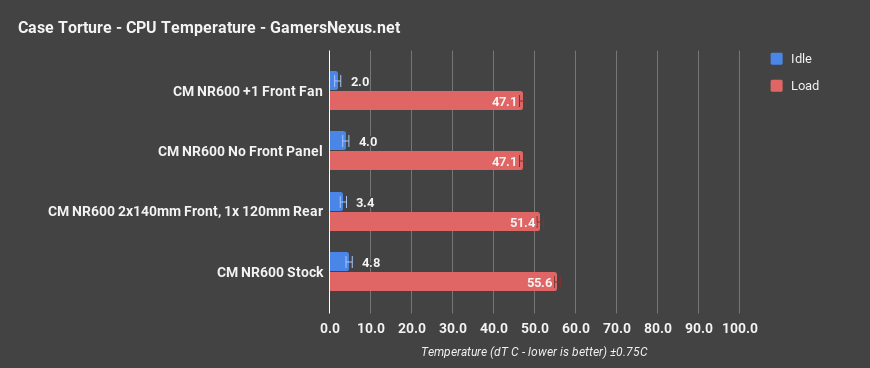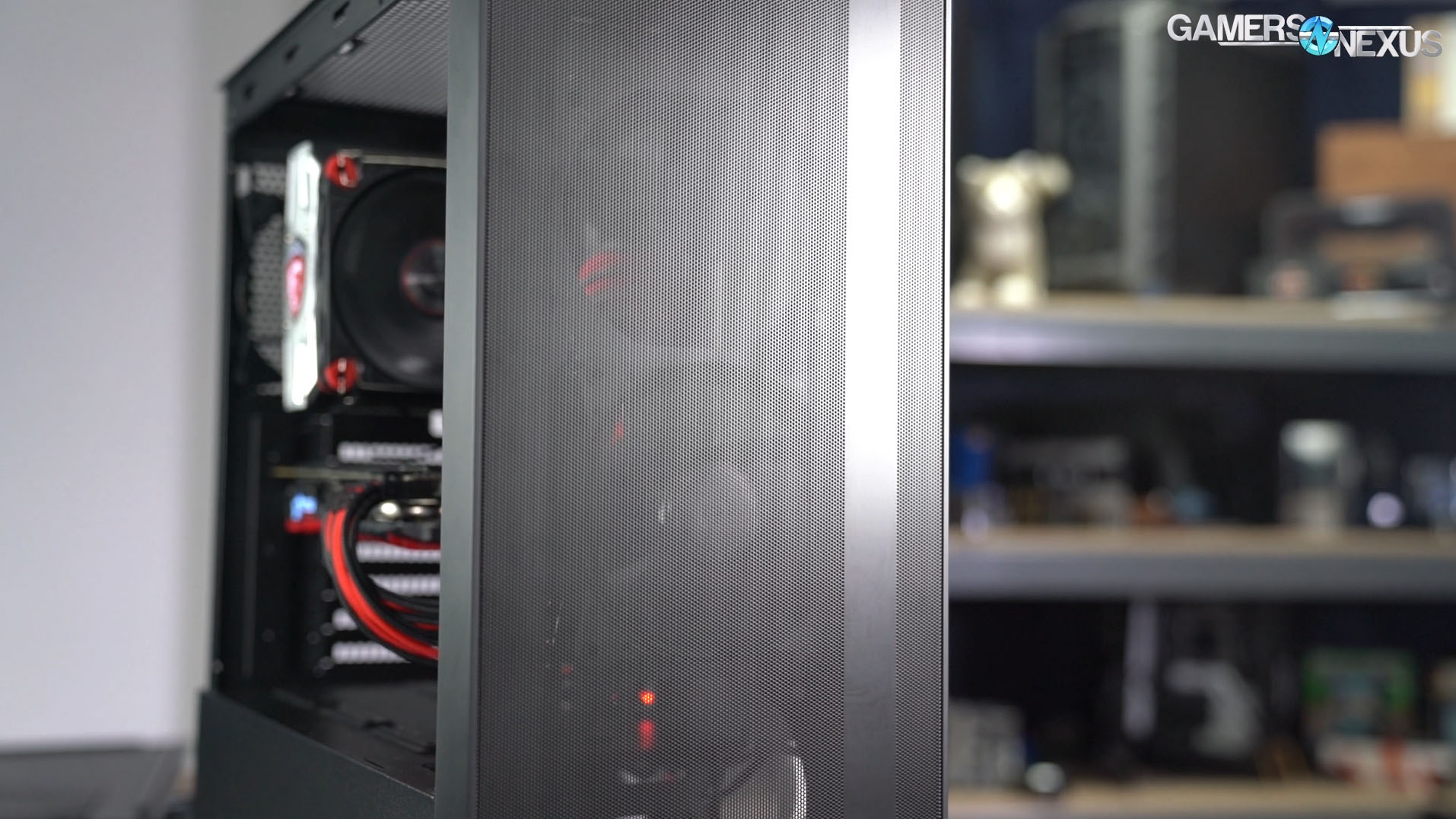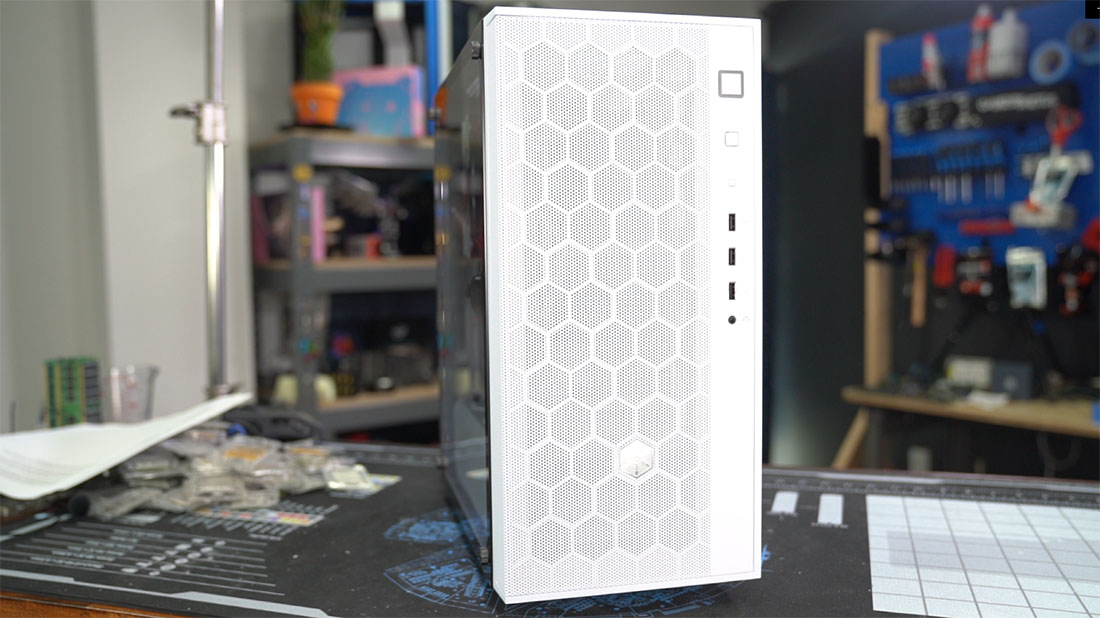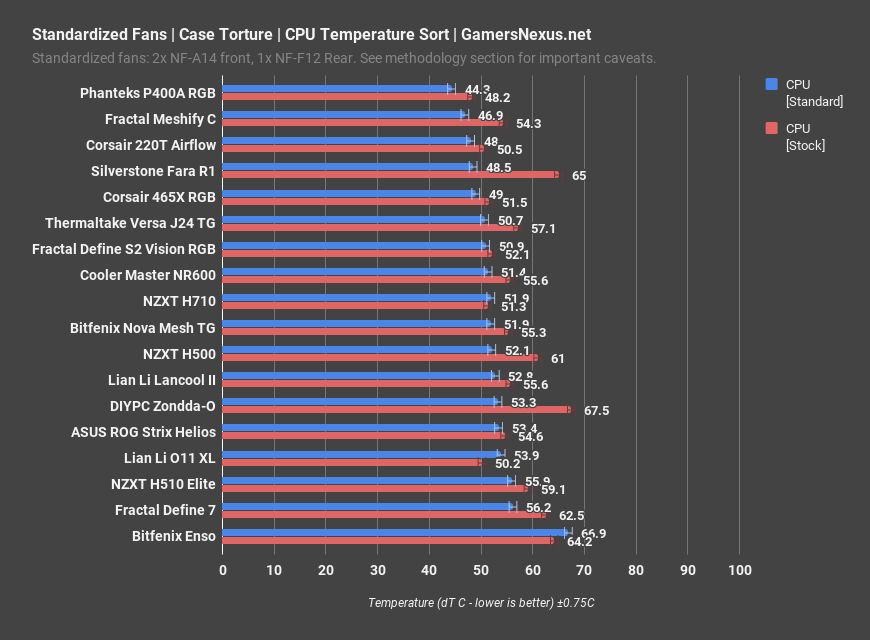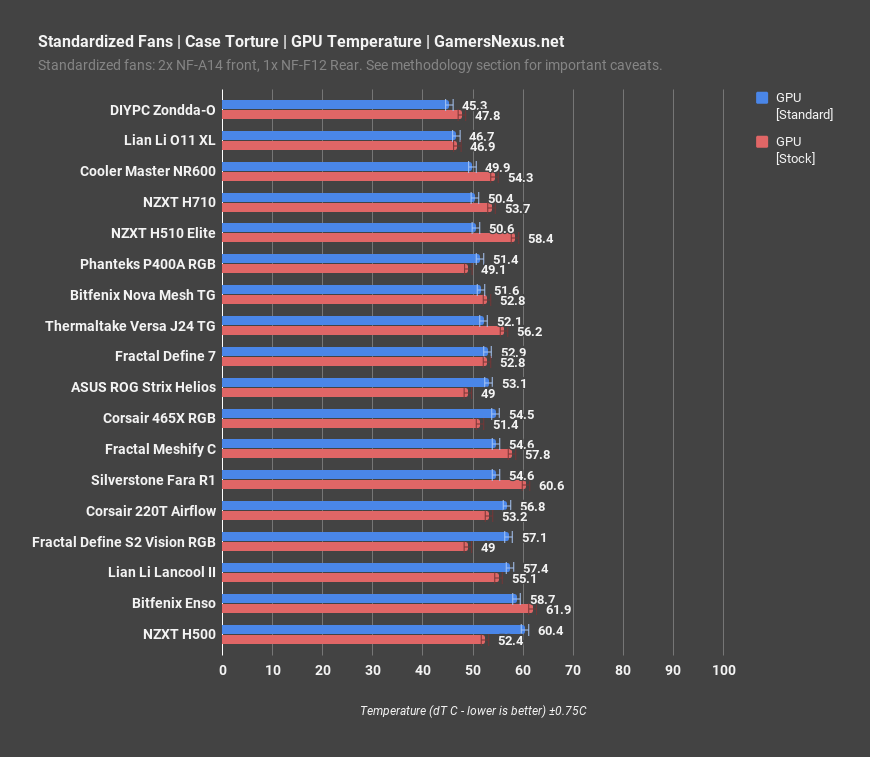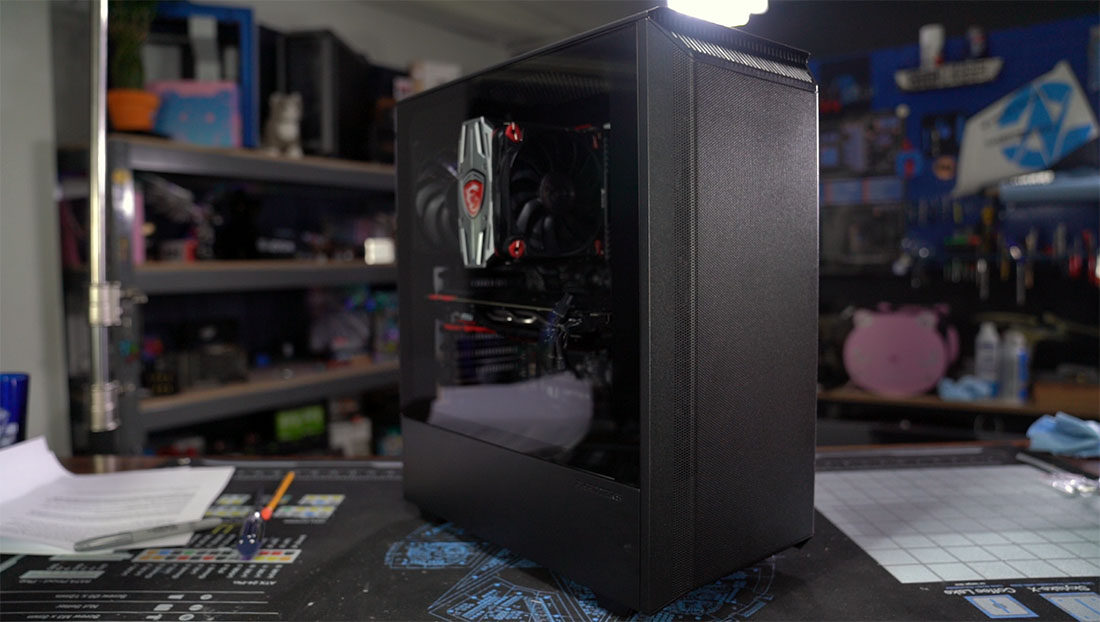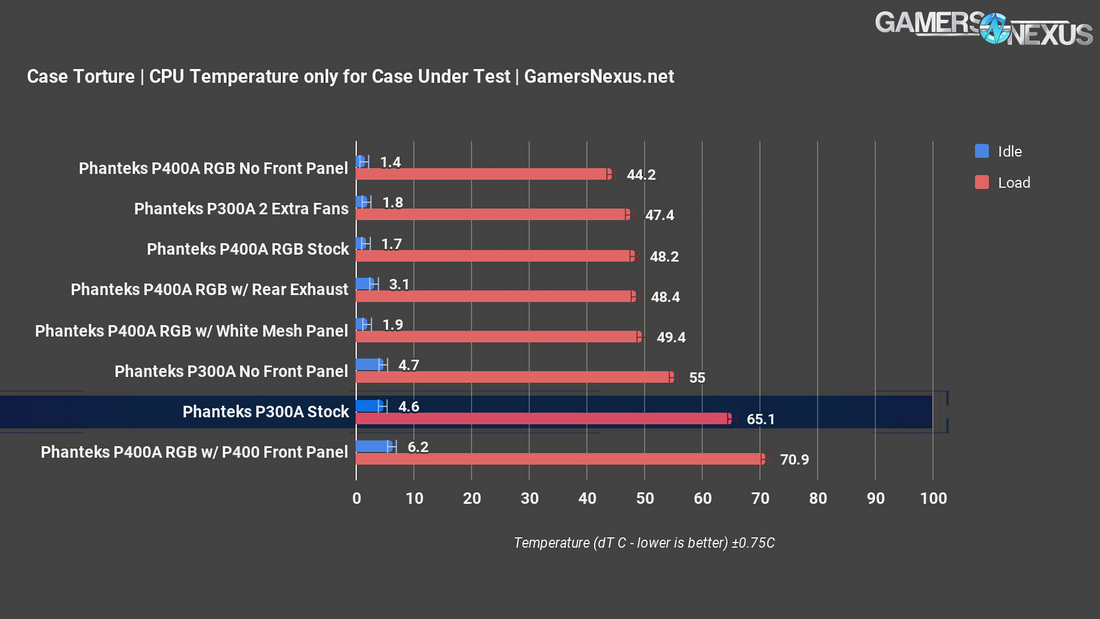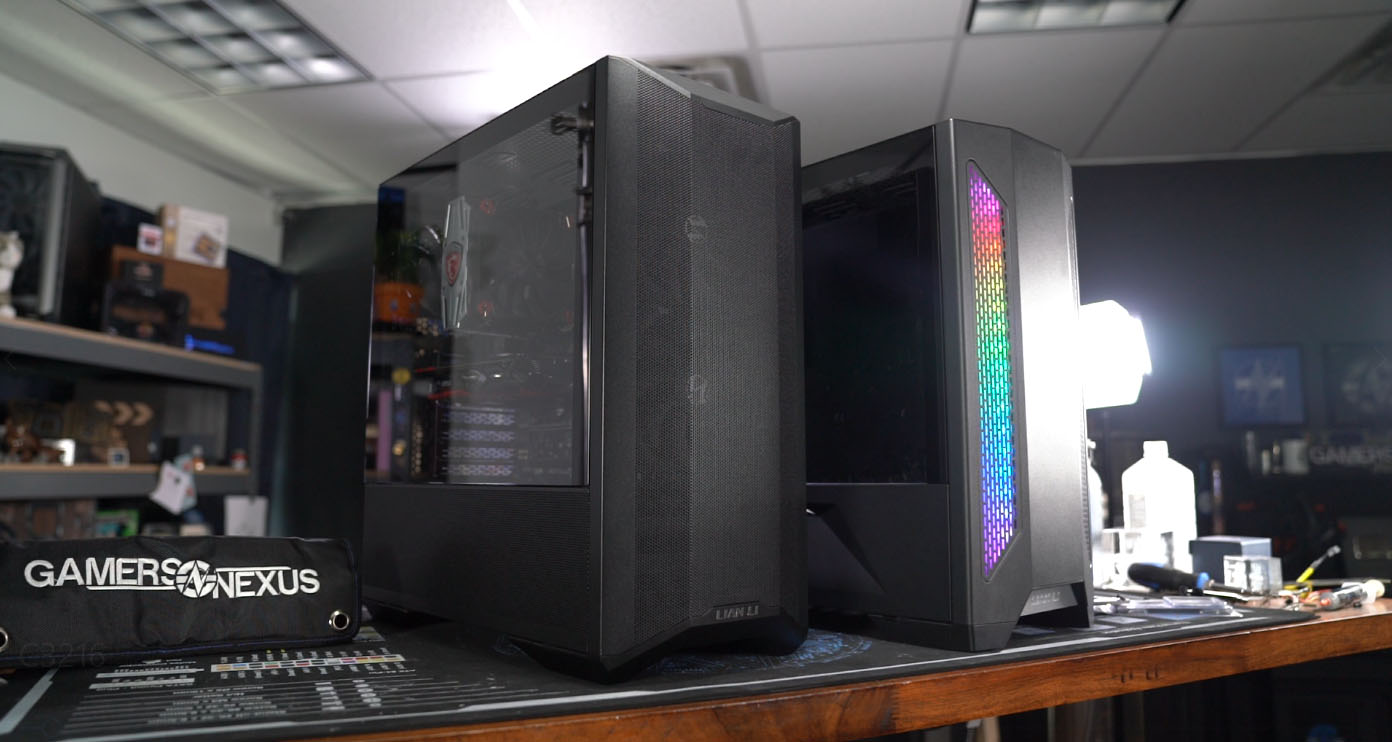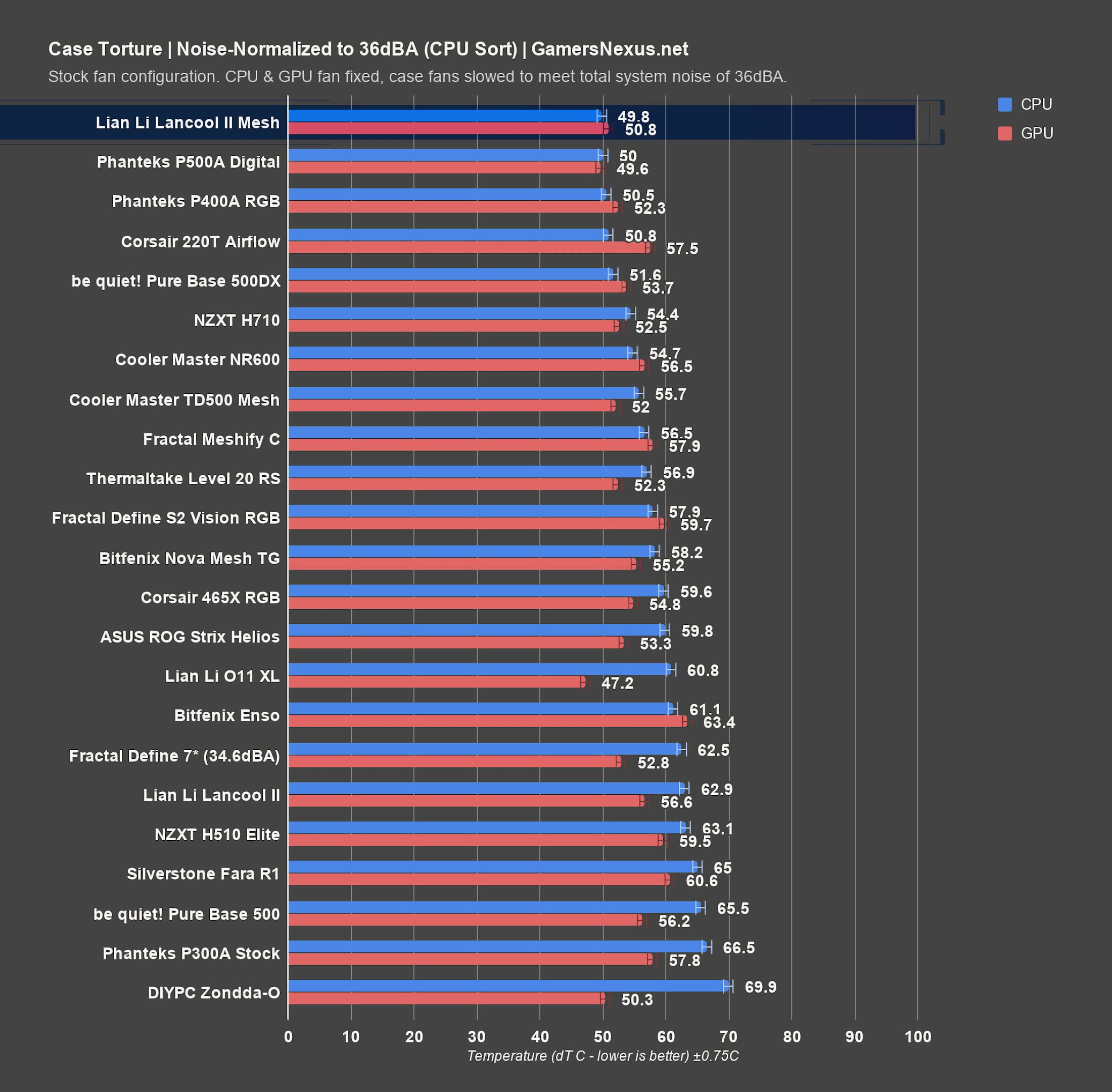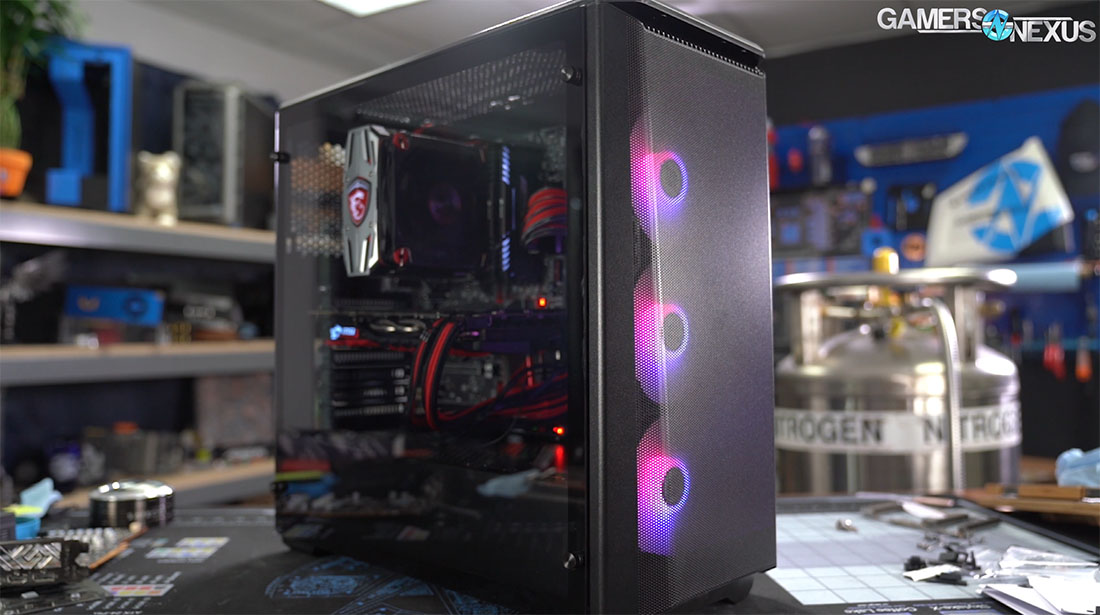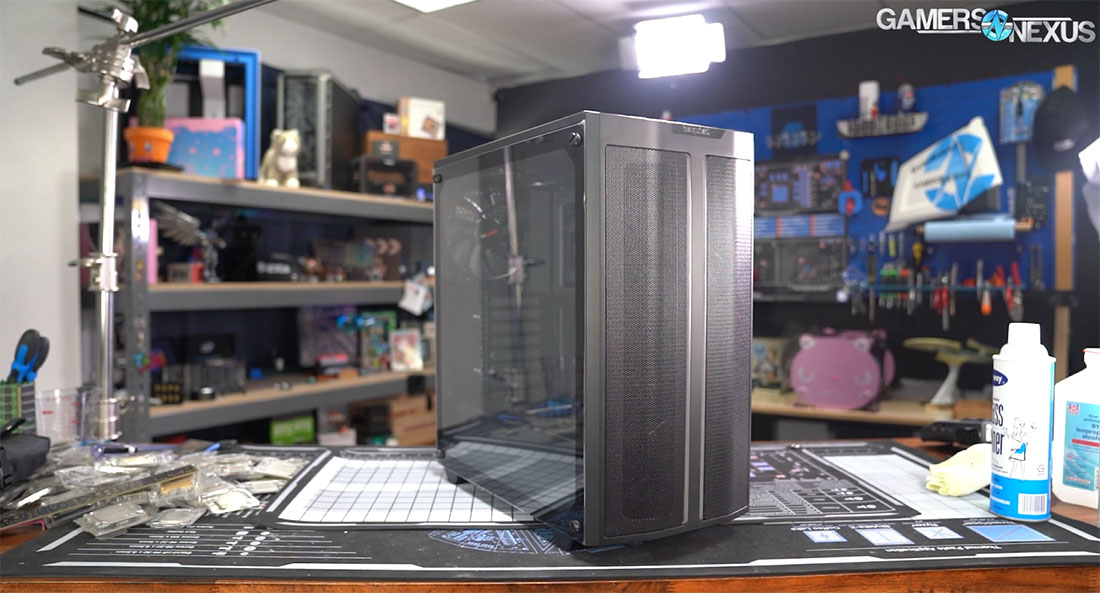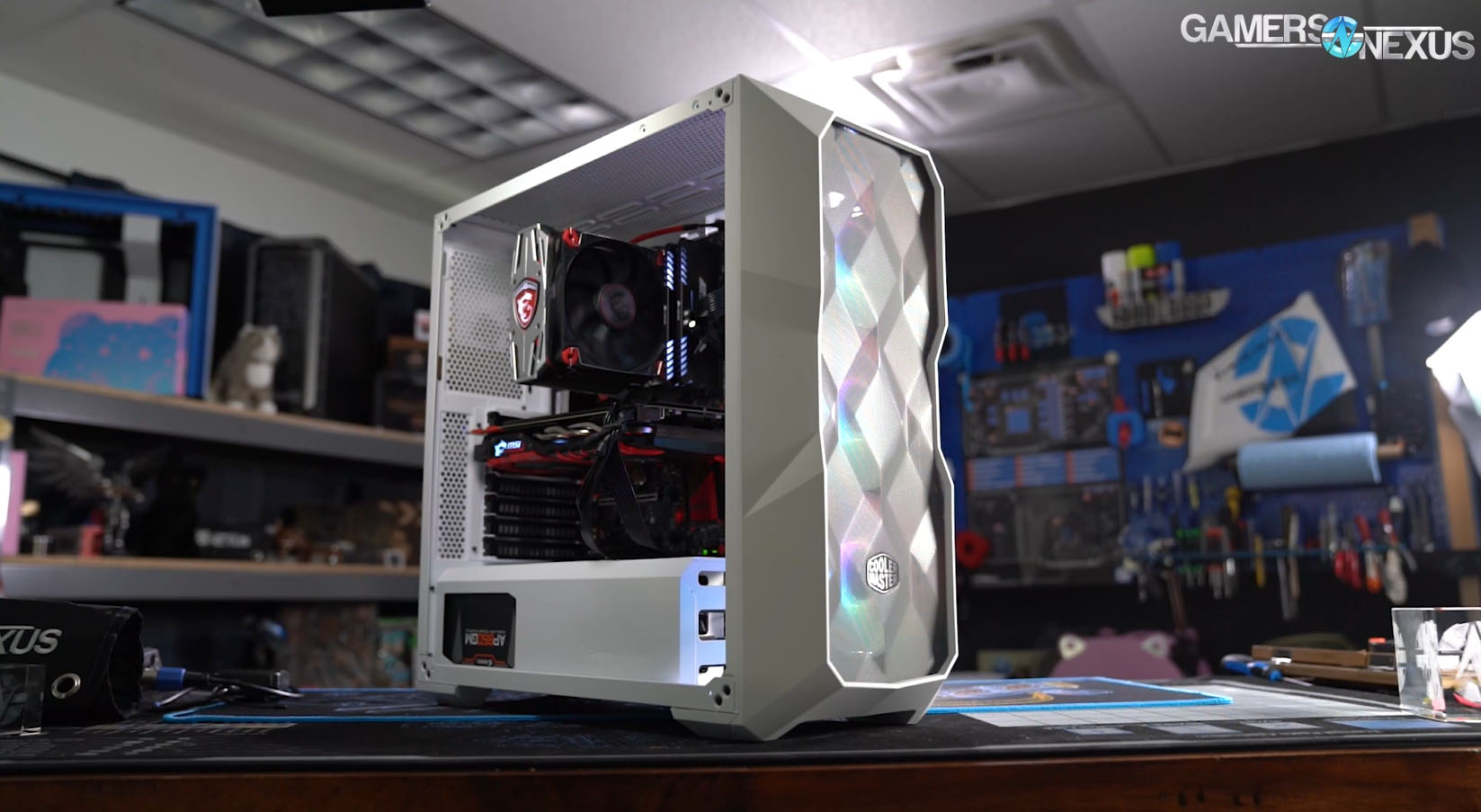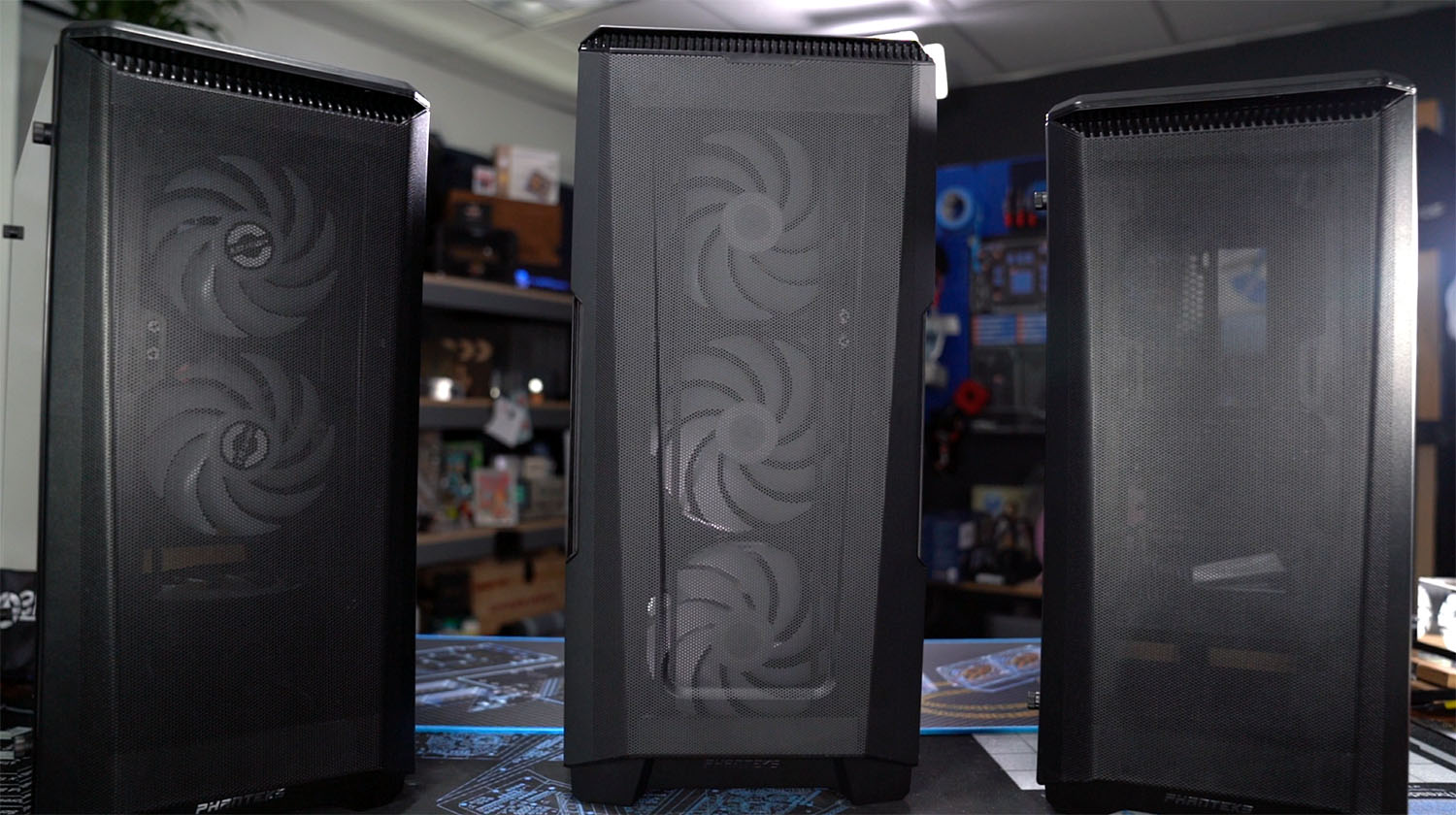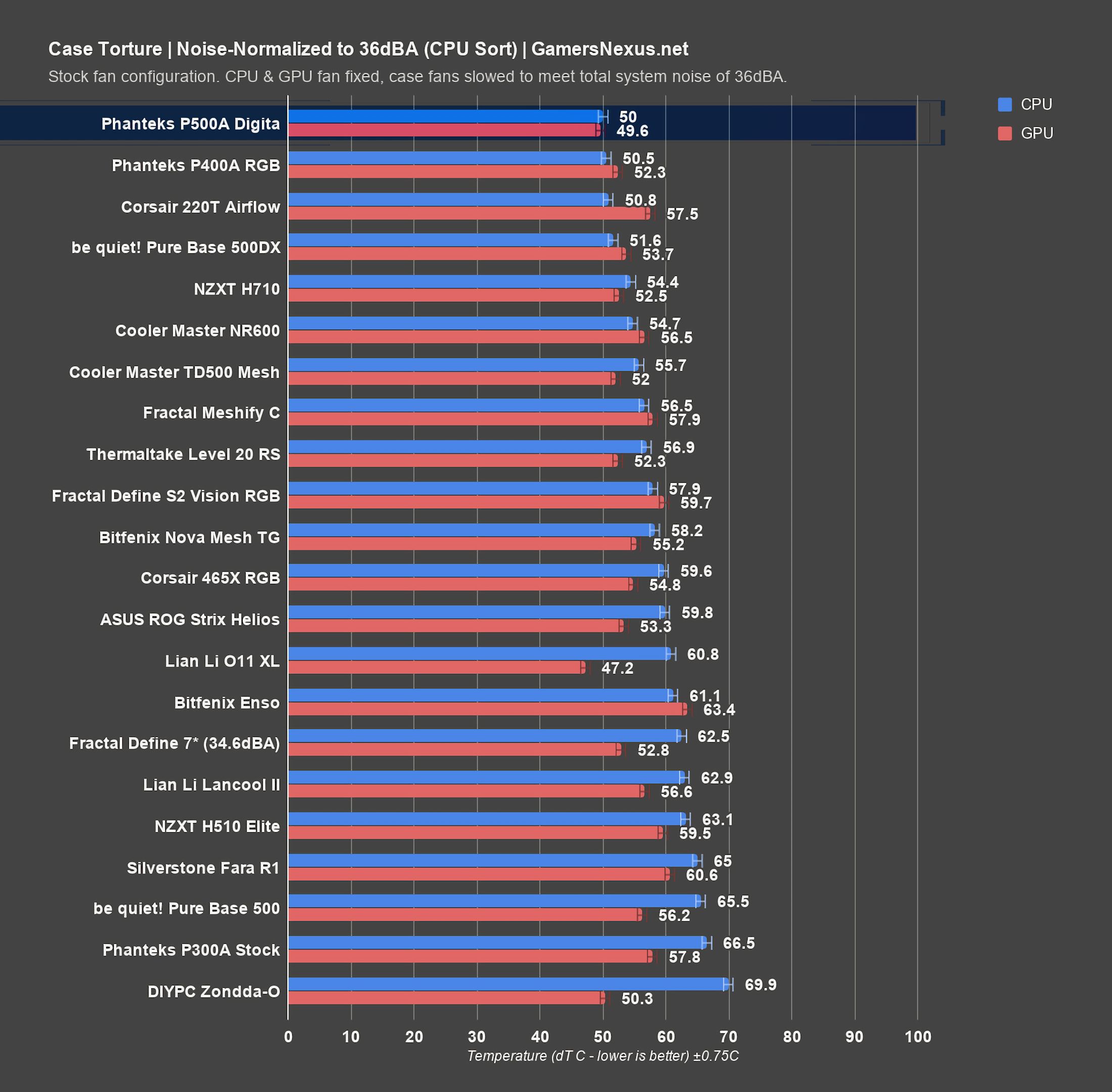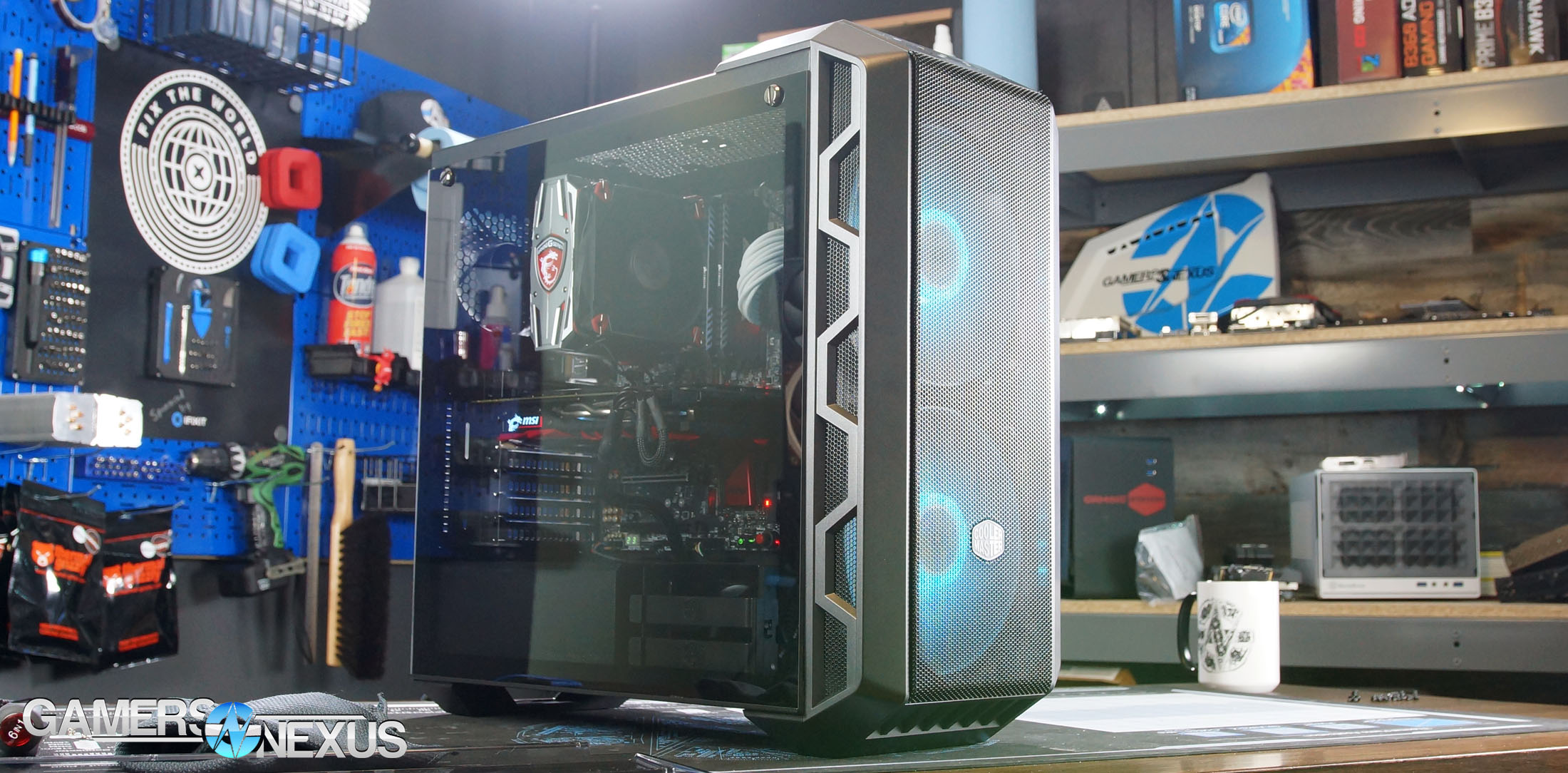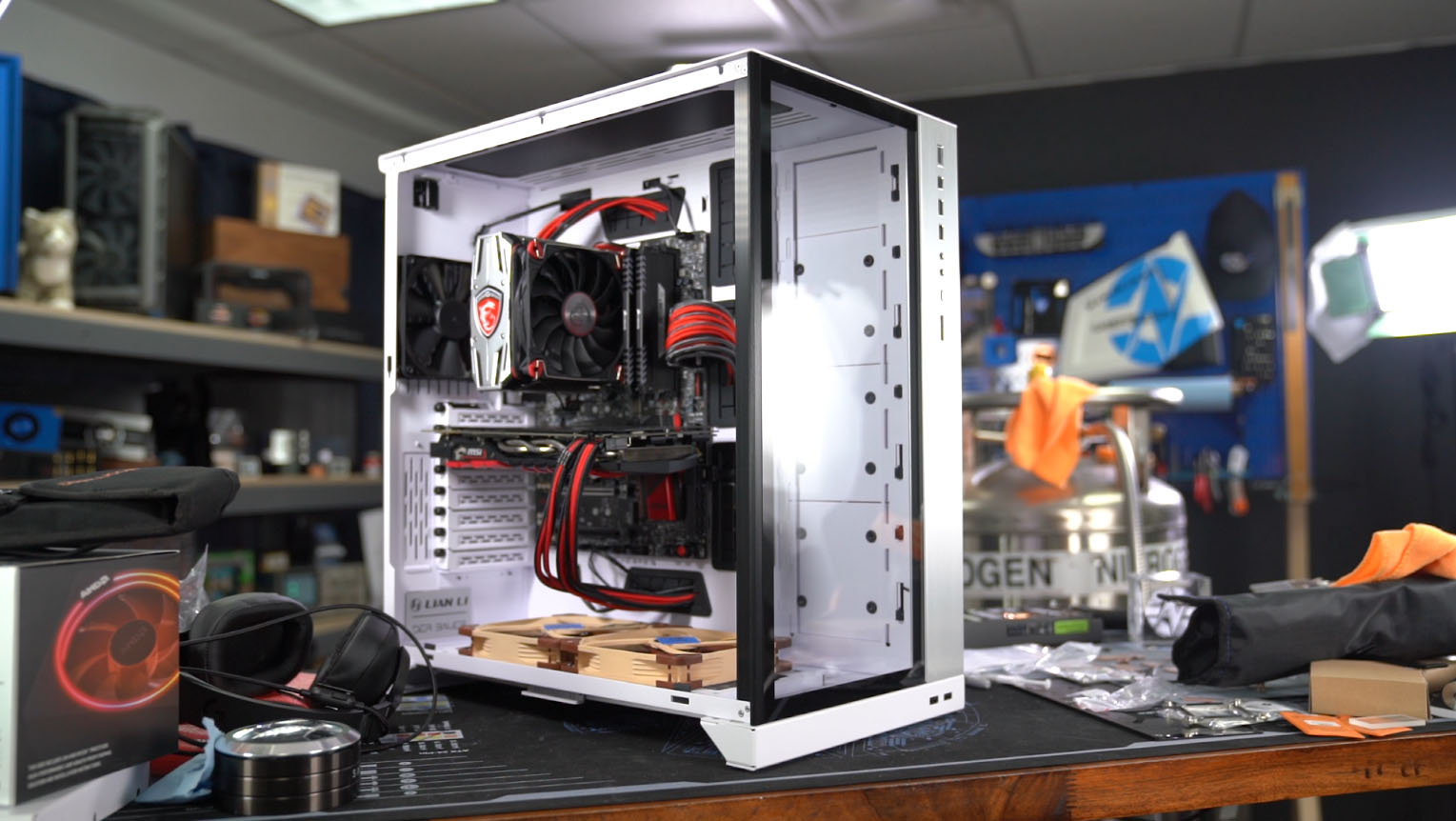Best PC Airflow Cases for 2020 So Far: $60 Budget to $200 High-End
Posted on July 17, 2020
Today is a round-up of the best airflow-focused cases currently out, which can also be tuned to be good acoustic performers by nature of unrestricted intakes. Over all the years that we’ve been doing case reviews, we’ve advocated for high airflow designs. That generally implies lots of mesh and lots of fans, like the classic Cooler Master HAF cases that adopted “high airflow” as a brand name. As those cases aged and optical drives fell out of favor, front panel designs became increasingly clean and minimalistic, and therefore increasingly closed-off. Now the tide has turned again, and in 2020, we have more airflow cases than we know what to do with. Today, we’ll be covering some of our top choices--this isn’t our yearly best-and-worst cases roundup, it’s just a selection of airflow-focused cases with good value. We have almost 300 rows of test data multiplied across about 7 sheets, so although we’ll be limiting ourselves to cases we’ve reviewed, that’s still a big list. As always, let us know if there’s another case we should check out in the comments below.
We won’t be talking thermals or build quality as in-depth as we do for individual case reviews, so we’ve linked the relevant reviews for each case below. If there’s one you like in particular, we’d encourage checking out its accompanying full review. We will also link to each case’s retail page, where we may make a small commission if you purchase the product from the retailer (this comes from the retailer, a third-party, not from the manufacturer).
Budget (<$90)
Cooler Master NR600 ($70)
Let’s start with the category we see the least of: sub-$90 cases. $90-$100 has become the most hotly contested price bracket for airflow mid towers, so any cases that slip below that limit automatically differentiate themselves. The Cooler Master NR600 is currently $70, sticking to the same MSRP we published in our review back in 2019. Its most positive feature is its cost, followed by the superfine mesh front panel that allows plenty of air through. The negatives are mostly related to the cost, too: it’s an extremely basic enclosure with only two 120mm stock fans which don’t provide great cooling unassisted. Buyers should stick to that size when adding additional fans--the whole case is designed with 120mm fans in mind, with the exception of the top panel. There is a separate variant of the NR600 with a cutout in the front panel for an optical drive, which has become a rare enough feature that it’s actually wrapped around from obsolete to being a potential selling point. A lot of our viewers have asked us to highlight with 5.25” drive cases are on the market, and for good reason: It’s still viable media, especially for people who rip or back-up data using optical discs, and it’s also rare to find in cases. The NR600 is on the smaller size of mid-towers, but still fits ATX motherboards. Expect it to feel a little cramped in the top.
The NR600 feels like its price-point: The steel panel uses an older style of tabs and hooks to latch into the case, which isn’t a big deal, but does show where cost savings come into play. Another artifact is the riveted hard drive cage, which imposes restrictions on cable management. The power supply dust filter is just a square of cut mesh that’s shoved into some tabs, making it slightly more inconvenient to clean. Upsides include good cable management pathways otherwise, like the cable tie points, and the ultra-fine mesh front. This one really just excels for its airflow potential.
Cooler Master further makes a micro-ATX version of this case, the NR400, which we’ve received several requests to review. Whenever we get back to small form factor reviews, it’s on our list. In the meantime, the NR600 is one of the better low-cost airflow-oriented cases right now, but it really does need an extra fan to get good performance. We have some charts that reflect this for CPU performance, where we saw a reduction from 56 degrees delta T over ambient in full stock configuration down to 47 degrees over ambient with 1 extra front fan. Consider the case an $80 case instead, then add a fan.
Silverstone Fara R1 ($61, on sale)
Our next one is also a cheaper class of case, and that’s the Silverstone Fara R1. The Fara R1 is similar in both intent and appearance to the NR600, but currently cheaper using Amazon’s sale price of $61. One of our main gripes when the R1 first launched was that we couldn’t find any listings cheaper than the NR600, and yet the R1 didn’t offer any significant advantage over it. At this price point, a difference of even a few dollars matters a lot in terms of competitiveness. The main downsides when compared to Cooler Master’s case are the single stock case fan versus the NR600’s two and the maximum of one 3.5” drive supported compared to the NR600’s four. The R1 also has a layer of fabric mesh glued in behind the front panel that we believe to be unnecessary, but it wouldn’t be hard to cut out. This fabric is the reason that the R1 doesn’t measure up to the NR600 in thermal performance even in our standardized fan test. The biggest upsides to the R1 are aesthetic, with the R1 available in white while the NR600 is exclusively black, and a full tempered glass panel rather than the NR600’s half panel. It also has better support for 140mm fans at the front of the case. Our opinion of the R1 at launch was neutral to leaning negative, with the primary downsides being that it wasn’t cheap enough when considering it needed extra fans, and considering its close competition from the NR600. With the lower prices post-launch, it has become more viable. Overall, these two budget cases are similar enough that whichever one is cheaper at any given time is the better bargain, but the hidden cost of another case fan should be tacked on to the price tags.
If we were going to cut a case from this round-up, it’d probably be the R1. The cost savings are obvious in this one, and it still shares weaknesses with the flanking P300A and NR600. Most of the R1’s PCIe slot covers are the punch-out variety, for instances, full-width ATX boards would cover up half of the cable cut-outs, power supplies can butt-up against the shroud and limit space for I/O cable routing, and the front panel has I/O wired into it, making maintenance more annoying. There are upsides, like the unique floral-pattern cable tie points that are more useful than standard loops, but this case has a few more shortcomings than nearby competition. It’s mostly worth considering for the looks and color options.
Phanteks P300A ($60)
The P300A is next, Phanteks’ follow-up to the GN award-winning P400A airflow case. This is currently available from a third-party seller on Newegg with a $10 rebate, but the “real” price is $60, in theory. Inventory of Phanteks cases has been shaky for the last few months, so your decision might be made for you when it comes to their enclosures. Although we weren’t particularly impressed with the P300A’s thermal performance in comparison to the P400A and P500A, it all comes down to a problem that it shares with the Fara R1: a lack of stock fans. Our standardized fan testing shows that the front panel isn’t significantly more restrictive than its much higher-performing sibling, the P400A, which makes sense--they’re similar designs. In some testing of just the P300A and P400A, we plotted results of the P300A with 2 extra case fans at 47 degrees over ambient for the CPU, providing a reduction of 17.7 degrees Celsius over the stock configuration. Mentally adding the cost of a couple $13 fans to the P300A still keeps it below $90, especially with a rebate, but when doing this kind of math, we’d advise considering slightly more expensive cases that include fans--like the P400A.
The P300A has a few features that make it worthy of consideration over some of the other budget cases nearby: One of them is shared with other Phanteks cases, like the removable top panel. It’s about 13 screws, give or take a few, to remove the top panel, so rather than being riveted in and immovable, it can be taken out for managing larger tower coolers and EPS12V connections. This is a big ease-of-installation feature that sets some of the Phanteks cases apart, and means that even a cramped interior like the P300A doesn’t have to make cable connections a hazard when working around sharp finstacks. The P300A is smaller than the average mid-tower, just like the NR600 and Fara R1 are, and so this feature is disproportionately useful given its cramped corridors.
Mid Range ($90-$100)
Lian Li Lancool II Mesh ($90-$95)
Just under $100 is the sweet spot for airflow-focused mid towers. We’ll lead off with the star of our most recent review, the Lancool II Mesh. This is a refresh of the earlier Lancool II non-Mesh, a case that had some remarkable lighting effects and not-so-remarkable cooling. The Mesh version fixed that, and thermals are excellent when compared to the other cases in this price bracket. Improvements over the original were marked, as seen in our Lancool II Mesh vs. non-Mesh tests, and in tests against the rest of the cases. The version we reviewed was the $90 non-RGB version, which we prefer. The RGB edition has three 120mm ARGB fans and comes in black and white variants, while the non-RGB version is plain black and comes with two 140mm fans and one 120mm, all black, connected to a fan controller. Stock performance was among the best we’ve seen, and the 140mm intake fans allowed the Lancool II Mesh to nearly tie the Phanteks P500A for all-time best noise normalized thermals (of the cases we’ve tested so far). This is an ideal case option for users who don’t want to replace fans or buy extras.
As for features, the Lancool II Mesh has a quarter-panel door at the bottom, perforated heavily for airflow for shroud-mounted fans. Its hard drives can be ejected from this door, without opening the main panel, and a separately available hot-swap drive backplane can be purchased for people interested in a mini-RAID 5 config or similar. There are some downsides, like the front panel sticking with an empty hole for the USB-C port, rather than offering a standard Type-A in its place. Lian Li sells Type-C cables separately for this, but we don’t like that approach. The case also has a gaping hole in the bottom of the front panel that isn’t covered with the fine mesh, bypassing any dust control measures otherwise in place. We recommended taping this closed, as the performance impact is mostly non-existent.
Phanteks P400A Digital RGB ($90)
The P400A is next, returning to one of these lists for airflow. Chronologically and appearance-wise, the Lancool II Mesh lines-up with the new Phanteks P500A, but the more appropriate price comparison is the P400A, a case we’ve lauded for the past year. We’re specifically referring to the P400A Digital RGB, which is the version that comes with three ARGB intake fans. There is a cheaper variant that has fewer fans and no lighting, but a large part of the P400A’s value is derived from the number of stock fans that come with it. We’ve given this case months of coverage in other reviews and our annual awards show, so we’ll keep this summary short. Suffice it to say that it’s got good airflow for the price, and check our previous content for more detail. Our Best Cases of 2019 would be a good place to look for a recap of this one, although the review also remains relevant.
be quiet! Pure Base 500DX ($100)
Be quiet!’s Pure Base 500DX charts next on the list of Best Airflow Cases for 2020 so far. The 500DX came as something of a surprise to us: in the past, be quiet!, has stuck to a narrow range of expensive noise-damping cases with bad thermals and slightly-less-expensive noise damping cases with bad thermals. That’s not to say the cases themselves are bad, just that they’re more focused on noise suppression over airflow. The Pure Base 500DX broke with that tradition with a mesh front panel and prominent RGB lighting, another unusual feature for the company. The Pure Base line is the cheapest of be quiet!’s offerings, followed by Silent Base and then the top-of-the-line Dark Base cases, meaning that the 500DX is not only the best be quiet! case we’ve reviewed in terms of thermals, but also one of the cheapest. Thermal performance with the three stock Pure Wings 2 140mm/900RPM fans didn’t top the chart in torture testing, but it’s competitive to this day on our noise-normalized chart.
In terms of pure dollar to performance ratio, the other two cases in this category are better bargains, but the 500DX maintains a sturdy feel and understated appearance. Even though this is one of its less-expensive enclosures, be quiet! has still chosen to include touches like a plastic-framed magnetic top filter that fits flush with the top panel rather than sticking on a plain rectangle of mesh. The case also has a movable and removable hard drive cage, a frame for the PSU to insert through the rear of the case, and a cable management bar. The case is missing some cable tie points and is missing a radiator tray, which some other cases in this category do include (like the Lancool II Mehs). Like the previous two cases in this category, it’s available in white.
Honorable Mentions: Cooler Master TD500 Mesh ($100), Fractal Meshify C ($80-$90)
Both of these are fine cases, but there are others that deserve the spotlight. The Meshify C was in the vanguard of a new wave of high airflow cases, but given three years of emerging competition it has relatively few stock fans for the price, and we’re less inclined to forgive flaws like the restrictive secondary layer of filter-foam in the front panel. Its popularity may eventually make it cheap on the used market. Offering a non-TG version for $10 less is also a good move by Fractal, and one that more companies should consider for their budget cases.
The Cooler Master TD500 Mesh clearly imitates the Fractal Meshify cases to some degree, but it includes a full complement of three 120mm ARGB front fans. It’s good, but we just don’t see it beating the similarly-specced but cheaper P400A outside of looks.
High End (>$100)
Phanteks P500A Digital RGB ($130)
The next one is the Phanteks P500A Digital RGB case, which is one of the newest two cases on the list. Like with the P400A, we’re again talking about the Digital RGB variant here. The $100 P500A non-Digital with two 140mm fans should be a pretty good deal too once it releases, pushing Phanteks into competition with its own P400A. The Digital version has impressive thermal performance in every category, especially GPU thermals, and it briefly topped the chart for noise-normalized thermals before the addition of the Lancool II Mesh. The biggest (no pun intended) advantage over the other Phanteks cases listed here is size. If the clearances in the smaller P400A are a problem that the P500A can solve, the extra $30 is worth it, and thermal performance is as good or moderately better than the P400A’s. The P500A has inherited some Phanteks premium features, like the plastic screw sorting box that they include. Additional unique features include the separately-purchased mini-ITX mounting bracket, which technically allows the assembly of two systems inside of one case. How viable this is becomes questionable, as you’ll see in our Evolv X review (it’s the same solution), but it’s one of the few differentiating features among cases at this price point.
The largest flaw we noticed with the case was that there’s not quite enough room for all three 140mm ARGB intake fans to be mounted on the outside of the chassis, so they have to be mounted on the inside instead, partially hidden by the fan mounts.
Cooler Master H500 ($120)
The H500P was a colossal failure for Cooler Master that also became a relationship ruiner for us, and it was all for the simple reason that Cooler Master tried to trade on the respected HAF branding with a case that was anything but high airflow. It also fell apart easily due to poor overall construction and assembly quality. If it hadn’t been for that, we wouldn’t have been so disappointed. Since then, Cooler Master has rebuilt its reputation and has started working with us again. To Cooler Master’s credit, every H500-series case we’ve reviewed subsequently has had at least the option for a mesh front panel and excellent airflow. All of them cost more than $100, so we’ve picked one of our best-reviewed options for this category: the H500 (or as we call it, for clarity, the “H500 Blank”). The hallmark of these cases is 200mm RGB front fans, something that Cooler Master has largely cornered the market on, with the occasional exception like the Level 20 RS. That alone carves-out a niche for the H500: some people want to use 200mm fans, and there are relatively few cases that support them. It gives a unique look to the case as well, although that does mean that front-mounted radiators become a non-option without specialized 200mm or 400mm radiators. Features specific to this model include a partial PSU shroud that doesn’t trap heat, and an optional acrylic front panel that can be safely ignored. Visually, the most unique feature is its humpbacked profile, a callback to the original HAF cases. The “hump” contains a plastic handle that’s actually useful for lifting the PC without being overengineered. This is one of the least expensive cases in the series, but even so, it’s $20 more expensive than it was when we published our 2018 review. Performance of the H500 isn’t any better than the mid-range cases we’ve listed, so the premium here is for those fans. Keep an eye out for sales on this one.
Lian Li O11 Dynamic XL ($200)
We weren’t sure whether to include the Lian Li O11 XL on this list since it breaks with the pattern of the other entries. The O11 XL has no mesh front, it has no stock fans, and we constantly have to issue caveats about the fact that it’s placed so high on our charts because we had to use our standardized set of Noctua fans to get “stock” results. Not only that, but Lian Li has already released an “Air” variant of the O11, one which didn’t perform especially well in our thermal benchmarks and didn’t make this list. Despite all that, we consider both the O11 Dynamic and especially its XL variant to be high airflow cases, in the sense that they’re covered with ventilation and fan mounting locations. It’s just that it’s up to you to leverage them. The interior of the case is divided into two main sections: the main chamber, which houses the motherboard, GPU, and all associated components, and a chamber behind the motherboard tray, which houses the power supply, drives, and cables. This layout creates tons of space for cable management and allows fans or even radiators to be installed at the bottom of the case, since the power supply is stored elsewhere. Like the original O11 Dynamic, most mounting brackets are geared towards 120mm fans, so checking the spec sheet carefully is recommended before committing to a build.
Unfortunately, the XL is well past the point of trying to compete on price. The O11 was popular, and that family’s name in combination with der8auer’s commands a premium. Maybe the non-removable “ROG Certified” label scrawled on the side panel added a buck or two as well. For those to whom price is no object, this is one of the best function-focused cases for liquid cooling that we’ve seen, and the quantity of fan and radiator mounts is hard to beat. You’re just going to be paying for all of it. We used the O11 XL in our production PC build for the video editors, where BPS Customs joined us for a water-cooled system with a high-performance focus.
Conclusion
This is a new era of choice for high airflow cases: in every price bracket, there are multiple solid options to select from. The tightest competition and the strongest price-to-performance ratios can be found in the mid range at $90-$100, especially when limited to only stock fans. We look forward to complaining about sealed off front panels and reaping our rewards for many years to come. Check the individual reviews linked above for more details on any one case. If you’re building a new PC and would like to get a high-quality anti-static PC building modmat (to protect the table and the parts you’re working on) or a desk mouse mat with a PC component design (and high-quality materials), consider visiting the GN store. These purchases will also support our research and testing directly, including acquisition of expensive, new test equipment.
Editorial, Testing: Patrick Lathan
Editorial, Test Lead, Host: Steve Burke
Video: Keegan Gallick, Andrew Coleman
